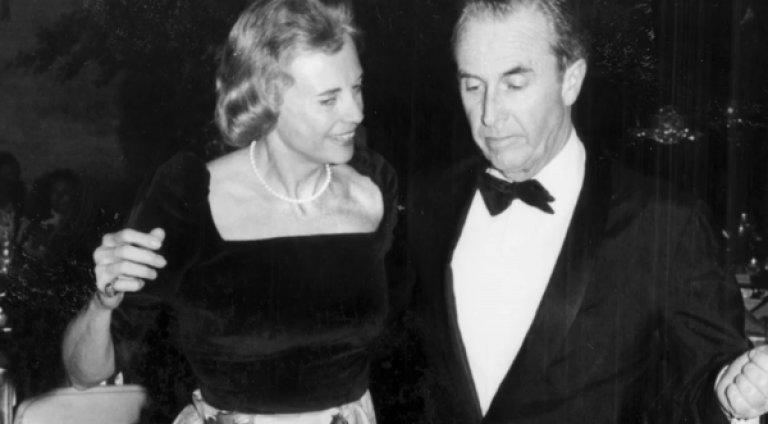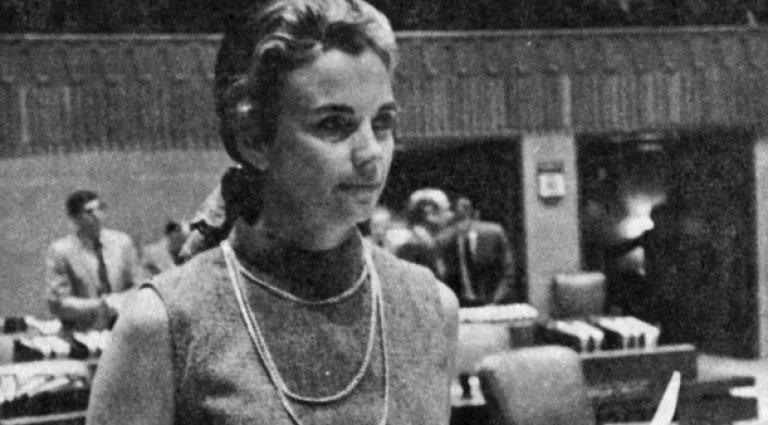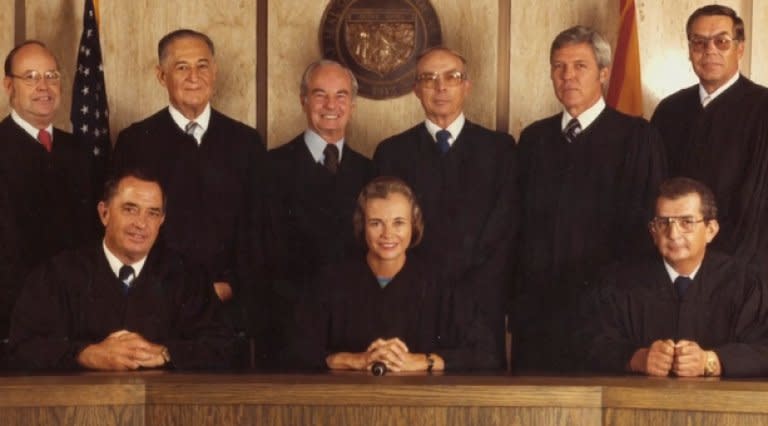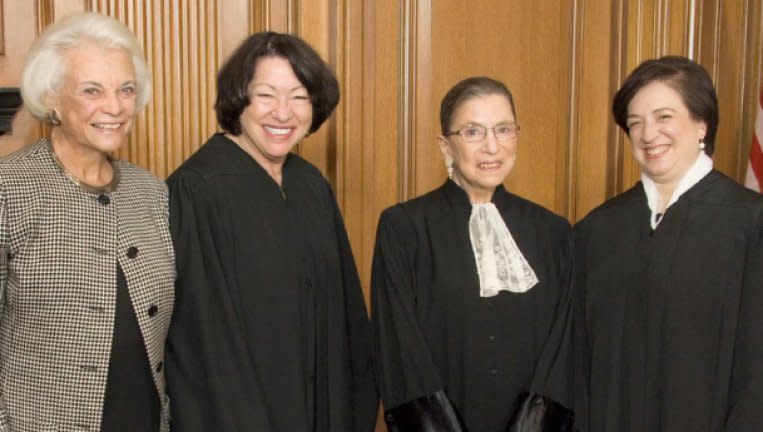Sandra Day O’Connor Reveals Alzheimer's Diagnosis, Nine Years After Losing Her Husband to the Same Disease
Former Supreme Court Justice Sandra Day O'Connor announced that she will be taking a step back from public life after receiving shocking news.
"Some time ago doctors diagnosed me with the beginning stages of dementia, probably Alzheimer's disease," O'Connor, 88, wrote in a public letter on Tuesday. "As this condition has progressed I am no longer able to participate in public life. Since many people have asked about my current status and activities, I want to be open about these changes, and while I am still able, share some personal thoughts."
O'Connor says she will retreat in her home in Phoenix where she is "surrounded by dear family and friends," including her children, Brian and Jay O'Connor. "While the final chapter of my life with dementia may be trying nothing has diminished my gratitude and deep appreciation for the countless blessings in my life," O'Connor wrote in her open letter. "As a young cowgirl from the Arizona desert, I never could have imagined that one day I would become the first woman justice on the U.S. Supreme Court."
This isn't the first time that Alzheimer's has affected O'Connor. The same disease took the life of her husband of 57 years, John, in 2009.

"You watch the person you care about just lose the mental capacity to cope with things," O'Connor told MAKERS in 2012. "It's heartbreak, it's just terrible."
O'Connor spent 25 years on the Supreme Court before she left in 2006 to care for her husband after he was diagnosed with illness.
"There is nothing that alleviates it, there is nothing that cures it," the former justice revealed about her husband's fight. "For some reason, this nation has tackled other major health issues: tuberculosis, AIDS, lots of things. This nation has not taken on the job of figuring out what to do about Alzheimer's. We must do that."
Since his death, O'Connor has remained dedicated to raising the next generation of leaders through her organization iCivics, which educates middle and high school students about how to be a thoughtful, active citizen.
With the news of her health, O'Connor wrote that she will be taking a step back from all her public responsibilities.
"I can no longer lead this cause, due to my physical condition," O'Connor wrote. "It is time for new leaders to make civic learning and civic engagement a reality for all."
Justice John Roberts responded to the news with a powerful reminder of O'Connor's legacy on the country, who paved the way for three additional female justices. O'Connor has been, Roberts said, "a role model not only for girls and women, but for all those committed to equal justice under law."

The Daughter of Ranchers
O'Connor grew up the daughter of ranchers—and, equally, of the land on the New Mexico-Arizona border that she and her family worked during the Great Depression. She would later recall ranch life as being formative in the simplicity, independence, and pragmatism demanded by the desert.
O'Connor went on to live her father's dream by earning a bachelor's degree and a law degree before marrying and starting a family.
It didn't take long to realize how harsh the world was for women at the time. In 1952, O'Connor graduated at the top of her class at Stanford Law School but had trouble finding a job because none of the law firms at the time would hire women. Finally she was hired as deputy district attorney in San Mateo county, California with a few exceptions—she worked without any salary and sat next to the secretary.
"I explained that I would be willing to work for him for nothing until such time as he was funded to pay a little more to another deputy," she said. "That was my first job as a lawyer."
It was then that she married fellow law student, John J. O'Connor III, and they moved to Arizona. After staying home with her children for a few years, O'Connor became an Assistant State Attorney General.
Breaking Glass Ceilings
In 1973, O'Connor broke her first of many glass ceilings, becoming the first female majority leader of a state legislature in the U.S. Her first mission? Examining every single law on the books in the state of Arizona that discriminated against women.
"We amended every single one to make it fair, and that was a big effort," O'Conner told MAKERS. "I was proud of that."
In 1975, O'Connor became a state court judge. Six years later, she was under consideration by President Reagan to become the first female Justice of the Supreme Court.
"Is that alright with you?" Reagan asked in a phone call with O'Connor.
"In fact I wasn't alright with it. I wasn't sure that I was equipped to do the job." O'Connor says, admitting to imposter syndrome about becoming the "first."
"It's wonderful to be the first to do something, but I didn't want to be the last. If I did not do the job well enough, there might be no second woman on the court."
Luckily O'Connor always had her husband John in her corner, cheering her on. "You'll be fine," he told her. "He had a lot more confidence than I did."
So did the rest of the world. In her first year on the court, O'Connor received more than 60,000 letters from supporters around the country and the globe.

Playing a Role Bigger Than Herself
"It meant taking on a very big role in my country," says O'Connor, a lifetime Republican who frequently cast the deciding vote on high-profile cases and voted twice to uphold the Roe V. Wade abortion decision.
"They were hard cases. They affect a lot of people and people care deeply about them, but you know you have a job to do." she said. "You're there to make legal decisions based on the law and the Constitution of the United States."
"Some of us as individuals find abortion offensive to our most basic principle of morality," O'Connor stated in the majority ruling of Planned Parenthood V. Casey, the 1992 case that reaffirmed abortion rights—despite O'Connor's personal beliefs. "But that can't control our decision. Our obligation is to define the liberty of all, not to mandate our own moral code."
Now, nearly four decades after her appointment, the number of women on the Supreme Court has gone from one to three. "My appointment just opened the doors and it was not only in the United States. It immediately had an effect in other parts of the world with opportunities for women."

But when you ask O'Connor about her legacy, she remains humble at best:
"I think of myself as an old lady who's had a pretty darn good career."

